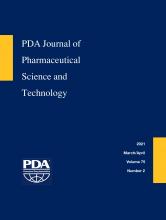Abstract
Relative potency assays for biological therapeutics require statistical evaluation to demonstrate similarity between the dose–response curves of a reference standard and the test samples. We developed an equivalence testing approach that can be utilized for the complete potency assay life cycle, from early development until commercialization. This approach was based on the use of generic equivalence margins to enable equivalence testing at the beginning of assay development, when the body of assay-specific data is still very limited. Generic equivalence margins for equivalence testing of four-parameter logistic curve fits were established for bioassays and binding assays spanning a variety of designs, formats, and read-outs. We also established that equivalence testing using ratios of the reference standard and test sample was superior to equivalence testing using absolute differences. Based on a large body of historical data, generic equivalence margins were determined for the curve upper asymptote, slope, and dynamic range. Furthermore, we developed a road map to guide the implementation of generic or assay-specific margins to ensure the appropriate data analysis approach is being applied during the assay life cycle.
- Potency
- Bioassay
- Fieller’s Theorem
- Parallelism
- Equivalence Testing
- Equivalence Margin
- Life cycle Management
- © PDA, Inc. 2021
PDA members receive access to all articles published in the current year and previous volume year. Institutional subscribers received access to all content. Log in below to receive access to this article if you are either of these.
If you are neither or you are a PDA member trying to access an article outside of your membership license, then you must purchase access to this article (below). If you do not have a username or password for JPST, you will be required to create an account prior to purchasing.
Full issue PDFs are for PDA members only.
Note to pda.org users
The PDA and PDA bookstore websites (www.pda.org and www.pda.org/bookstore) are separate websites from the PDA JPST website. When you first join PDA, your initial UserID and Password are sent to HighWirePress to create your PDA JPST account. Subsequent UserrID and Password changes required at the PDA websites will not pass on to PDA JPST and vice versa. If you forget your PDA JPST UserID and/or Password, you can request help to retrieve UserID and reset Password below.






